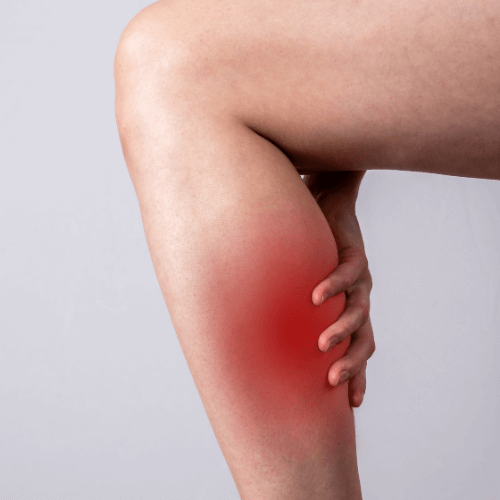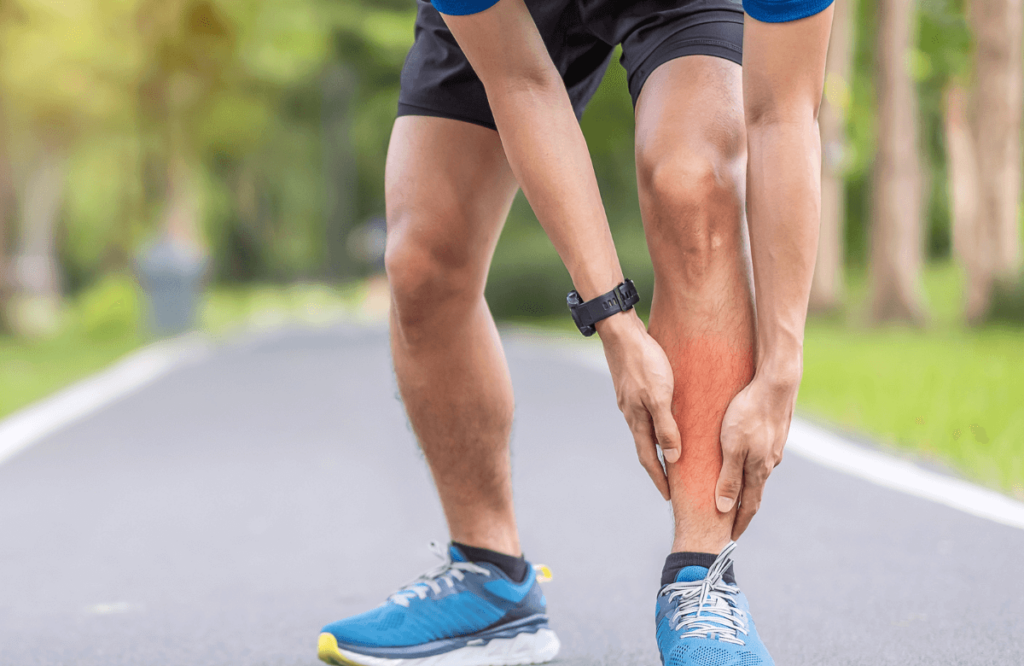The calf muscles are often underestimated but play a crucial role in our everyday movements. Whether you’re an avid runner, a gym enthusiast, or simply someone who wants to keep their lower legs limber and injury-free, incorporating calf stretches into your routine is essential. Tight calf muscles not only hinder your athletic performance but can also lead to painful conditions like calf strains or tears. In this comprehensive guide, we will explore seven of the best calf stretches, how to perform them correctly, why you should care about calf tightness, and when to include calf stretching in your fitness routine.
Jump to:
Calf Muscles: What Are They Exactly?
Before delving into the stretches, let’s gain a deeper understanding of calf muscle anatomy. The calf muscles are situated at the back of your lower leg and consist of two primary muscle groups: the gastrocnemius muscle and the soleus muscle. These muscles are responsible for plantarflexion (pointing your toes downward) and play a pivotal role in activities such as walking, running, and jumping. When these muscles become tight or overworked, they can lead to discomfort, decreased mobility, and potential calf injuries.

Calf Stretches And How To Do Them Properly:
- Calf Muscle Stretch with or without a Wall:
With a Wall:- Stand facing a wall, approximately arm’s length away.
- Place your hands on the wall at shoulder height for support.
- Step one foot back while keeping it straight and bend the front knee.
- Lean forward into the wall while ensuring your back leg remains straight.
- Hold this position for 15-30 seconds and then switch to the other leg.
Without a Wall:
- Follow the same steps as above but without the wall for support.

- Heel Cord Stretch with Bent Knee:
- Stand facing the wall.
- Bend one knee in a higher lunge-type position.
- Lean forward and have your hands make contact with the wall in front of you.
- Maintain this stretch for 15-30 seconds before switching to the other leg.
- Towel Stretch:
- Sit down with your legs extended.
- Loop a towel around the ball of your foot.
- Gradually pull the towel toward you while keeping your knee straight.
- Hold this stretch for 15-30 seconds on each leg.
- Calf Raises:
- Stand with your feet hip-width apart.
- Rise onto your toes as high as you can.
- Slowly lower your heels back down.
- Repeat this motion 15-20 times.
- Plantarflexion and Ankle Dorsiflexion:
Dorsiflexion Stretch:- Sit on the floor with your legs extended.
- Flex your toes toward your shins, feeling the stretch in your calf muscles.
- Hold for 15-30 seconds. This exercise can be done standing as well.
Plantarflexion Stretch:
- Sit on the floor with your legs extended (or stand).
- Point your toes away from your shins.
- Maintain this stretch for 15-30 seconds.
- Heel Drop Stretch:
- Stand on the edge of a step or platform with your heels hanging off.
- Slowly lower your heels below the level of the step.
- Hold this position for 15-30 seconds.
- Soleus Foam Roller Massage:
- Sit on the floor with your legs extended.
- Place a foam roller under your calves.
- Roll back and forth, targeting any tight spots, for 1-2 minutes on each leg.
What Causes Tight Calf Muscles?
Tight calf muscles can result from a variety of factors, including overuse, inadequate stretching, improper footwear, and muscle imbalances. High-intensity workouts, long periods of standing, and not allowing your calf muscles proper recovery time can also contribute to tightness.
Why Shouldn’t You Have Calf Tightness?
Tight calf muscles can lead to a range of issues, from discomfort and reduced flexibility to more severe problems like calf strains, Achilles tendonitis, or even stress fractures. Maintaining flexible calf muscles is crucial in preventing these issues and enhancing your overall athletic performance.
So, Can Calf Stretching Prevent A Calf Strain Or Tear?
Absolutely. Regular calf stretching can significantly reduce the risk of calf strains and tears. By consistently working on your calf flexibility, you decrease the likelihood of overstretching or tearing these muscles during physical activities.

Is It Recommended To Stretch Before Or After A Run?
Both before and after a run, stretching can be beneficial, but the type of stretches differs. Before a run, focus on dynamic stretches that warm up your muscles, such as leg swings or high knees. After your run, incorporate static stretches like the ones mentioned above to improve flexibility and prevent muscle tightness, ultimately aiding in your recovery. Same thing if you’re going to be working your gastrocnemius and the soleus muscle with intense calf workouts.
In conclusion, taking care of your calf muscles is vital for overall leg health and injury prevention. Incorporating these seven calf stretches into your routine can help keep your lower legs loose, flexible, and ready for any physical activity. Remember to listen to your body, maintain consistency in your stretching routine, and enjoy the benefits of improved calf health and performance.













